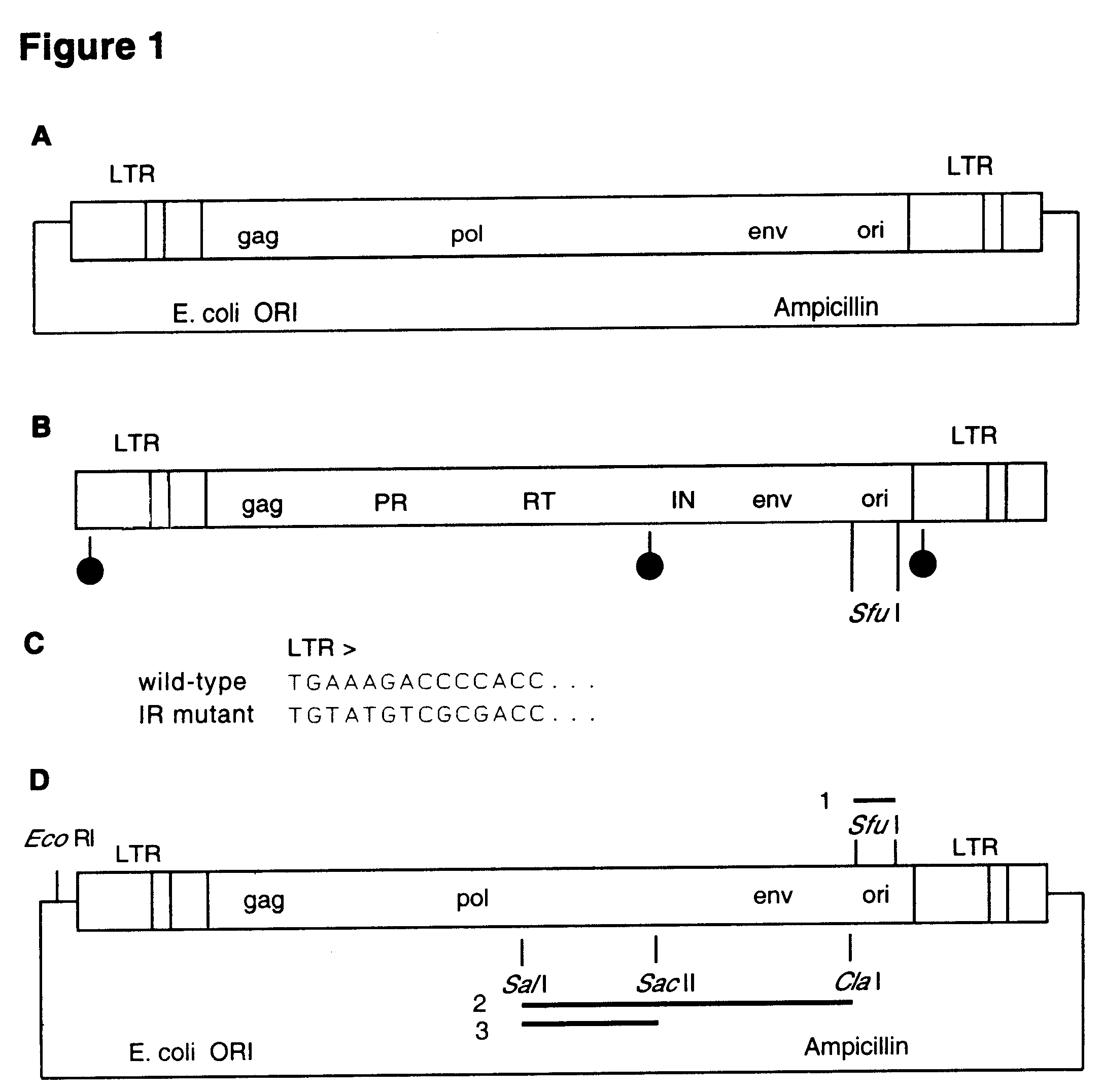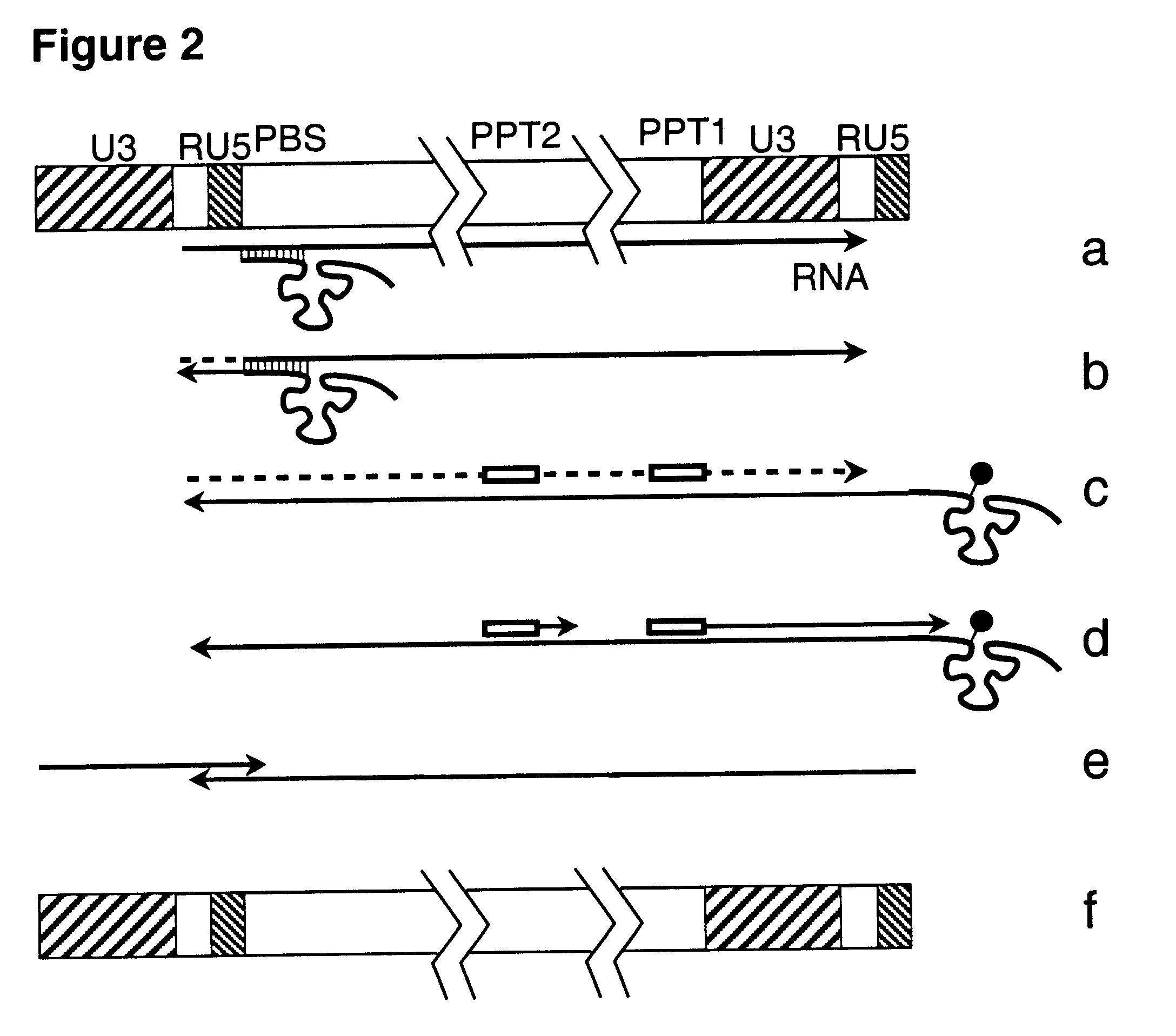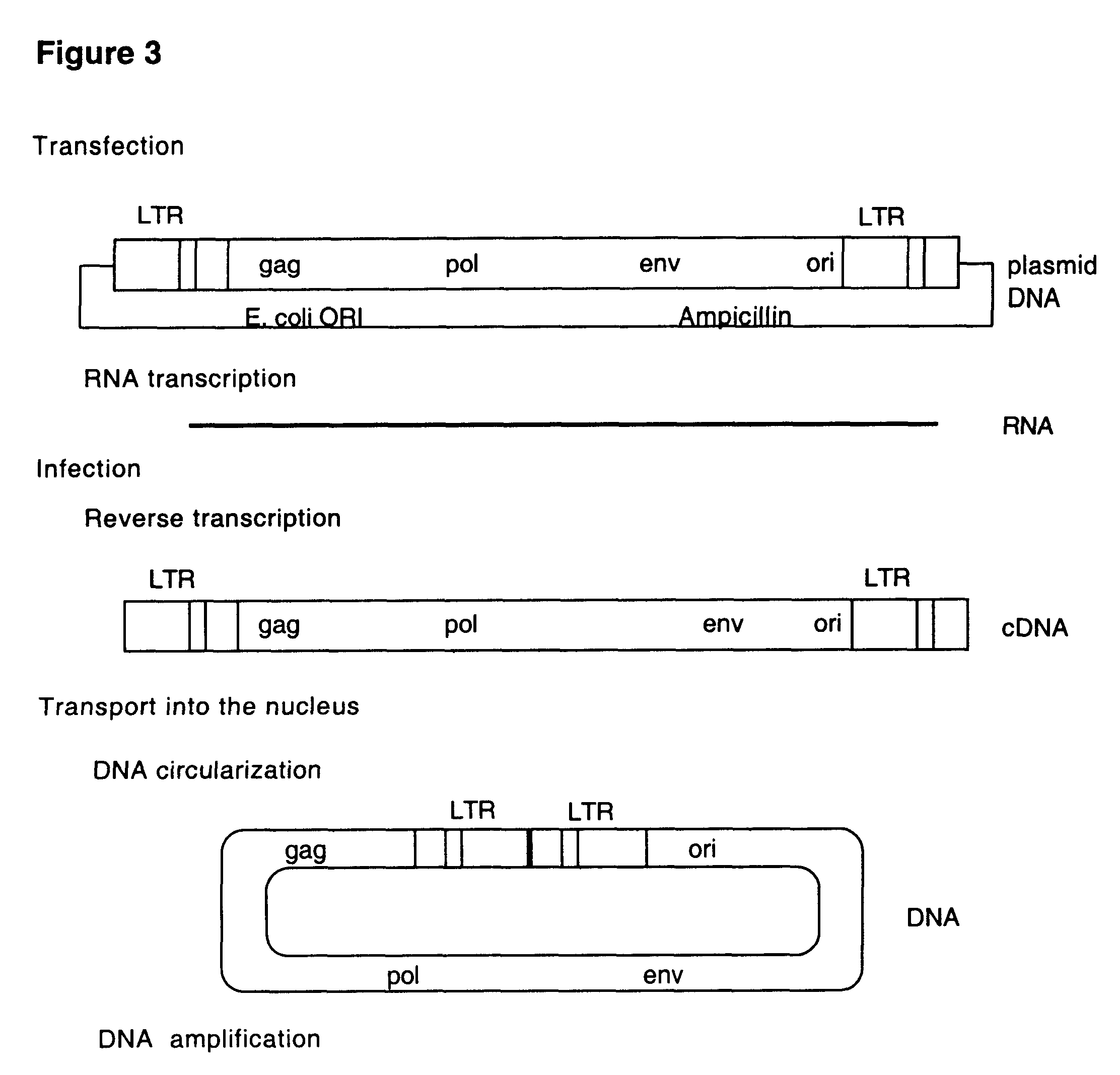Retrovirus and viral vectors
a technology applied in the field of retrovirus and viral vector, can solve the problems that retroviruses cannot replicate episomally or extrachromosomally, and the prior art is unambiguous, so as to enhance the immune response of the patient and prevent or attenuate the diseas
- Summary
- Abstract
- Description
- Claims
- Application Information
AI Technical Summary
Benefits of technology
Problems solved by technology
Method used
Image
Examples
example 1
General Procedure
The inventor designed and constructed several viruses that are hybrids between a retrovirus and a small DNA virus. These hybrids use a different replication strategy in their life cycle. These viruses serve for the design of new vaccines against different viruses, including HIV, as well as for cancer vaccines and vectors for gene therapy.
First step in construction of the hybrid retroviruses is to introduce, by PCR, unique SfuI restriction site into Moloney murine leukemia virus on the plasmid pNCA (Colicelli and Goff, 1985) just downstream of the envelope open reading frame. The mouse polyoma (Py) virus ori sequence is amplified by PCR on the plasmid template pHG20 (Gassmann et al., 1995) creating DNA fragment flanked by SfuI sites (FIG. 1). This fragment is introduced into the SfuI sites of the modified viral DNA. The retroviral integrase gene is mutated by introduction of the HindIII-SalI DNA fragment from plasmid S247 IN-, which contains the integrase coding regi...
example 2
Non-integrating HIV Replicating Via DNA Episome
In order to investigate directly the ability of a lentivirus to replicate without integration into the host genome the HIV-1 LAI virus harboring the SV40 ori in place of part of nef gene upstream the polypurine tract (PPT) is constructed. The system where the major early replication protein, large T antigen form SV40 is provided in trans is developed. In this system human T cell lines CEM, H9 and Jurkat are transfected with construct expressing large T antigen and further selected for stable expression of thereof. The cells are maintained in RPMI 1640 medium supplemented with 10% fetal bovine serum, penicillin and streptomycin. The human cells 293 are transfected with the nucleic acid of the above viral construct. The 293 produced virus is used to infect the CEM, H9 and Jurkat cells stably expressing T-antigen and the viral growth is monitored by in vitro reverse transcriptase (RT) assay.
example 3
Non-integrating HIV Self Replicating Via DNA Episome
The HIV-1 LAI virus harboring SV40 ori and large T-antigen upstream the 3U LTR and a partial nef deletion is constructed. The virus contains the integrase protein in which the critical amino acid residues in the catalytic domain are mutated rendering it integration defective. The virus is able to infect susceptible cells. Followed reverse transcription and circularization of its cDNA the viral nucleic acid is maintained in the cell as extrachromosomal DNA. This DNA is a template for newly synthesized viral RNA, which after synthesis of viral proteins gives rise to a new infectious virions or virus particles.
PUM
| Property | Measurement | Unit |
|---|---|---|
| Composition | aaaaa | aaaaa |
| Immunogenicity | aaaaa | aaaaa |
| Cytotoxicity | aaaaa | aaaaa |
Abstract
Description
Claims
Application Information
 Login to View More
Login to View More - R&D
- Intellectual Property
- Life Sciences
- Materials
- Tech Scout
- Unparalleled Data Quality
- Higher Quality Content
- 60% Fewer Hallucinations
Browse by: Latest US Patents, China's latest patents, Technical Efficacy Thesaurus, Application Domain, Technology Topic, Popular Technical Reports.
© 2025 PatSnap. All rights reserved.Legal|Privacy policy|Modern Slavery Act Transparency Statement|Sitemap|About US| Contact US: help@patsnap.com



